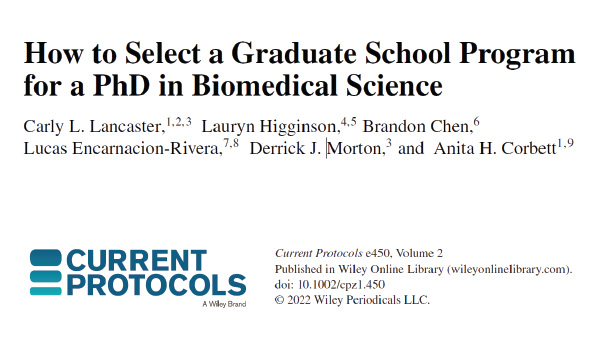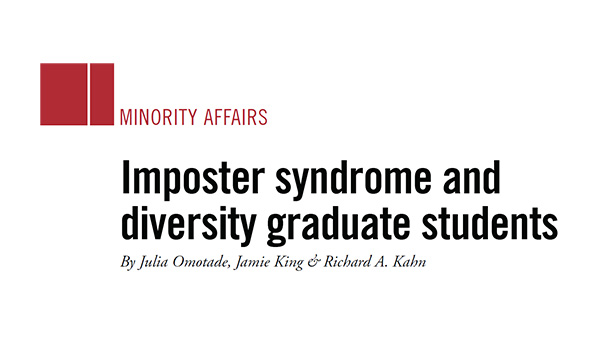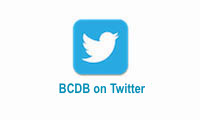Professionalization Workshops
In efforts to formalize the professional activities of graduate school and make students and faculty more aware of a host of issues that may lie outside of classroom instruction but deemed important to future success, a group of students and faculty developed a series of monthly workshops for members of the BCDB program. First- and second-year students are required to attend every session, and advanced students must attend at least two per year.
Below are the handouts, slides, and/or discussion points from these sessions. These are meant as resources and starting points for discussion, not the definitive source of all knowledge.
9/13/13 - Time Management
October 2013 - Teaching and Mentoring Younger Students
- Science Education Journal List (DOCX)
- Sample Job Ads in Biology Education (PDF)
- Teaching Demonstration Advice (PDF)
November 2013 - Grants
December 2013 - Career Planning
- Introduced BCDB's response to the Individual Development Plan initiative of the NIH
- Slides Required for Committee Meeting (PPTX)
- Voluntary Slides for Committee Meeting (PPTX)
January 2014 - Lab Notebooks and Electronic Data Management
February 2014 - Stress, Negativity, and Rejection
March 2014 - Meetings and Posters
April 2014 - Writing and Submitting a Paper
9/21/12 - Mentor Selection
- What to look for in a grad school mentor
- What to expect from your mentor as you advance
- What to look for in your post-doc mentor search
- Finding a Mentor (PDF)
10/26/12 - Thesis Committee Meetings
- How to run a productive thesis committee meeting
- Why we even have thesis committee meetings
- What's required of you as a student
- Thesis Committee Slides (PDF)
- Thesis Committee Outline/Notes (PDF)
11/30/12 - Grants and the Funding of Science
- The overall funding structure of biomedical research
- Why it is necessary to establish a track record of securing funding early on
- Direct vs. Indirect, Soft vs. Hard
- Where to get money for your research and career
- How the grant process works
- Grants - Slides (PDF)
- Grants - Resources (PDF)
12/7/12 - Career Planning and Development
- How to plan for your career and why it is important
- What it looks like at various stages of grad school
- Use of the myIDP website
- Career Planning Slides (PDF)
- Career Planning Worksheet (PDF)
1/18/13 - Professional Etiquette
- What it means to be a professional graduate student
- What actions/activities are acceptible and how it varies with local culture
- How to interact with people outside Emory, e.g. how to request a reagent
- Professional Etiquette Slides (PDF)
- Professional Etiquette Outline/Notes (PDF)
- Reagent Request Template (PDF)
1/25/13 - Reading and Writing Scientific Research
- What tools are available to keep on top of research in your field and more generally
- How to read scientific papers efficiently
- How to approach writing up your own research
- Reading and Writing Scientific Research: Notes and Resources (PDF)
- Rick Kahn's Paper Writing Method (PDF)
3/1/13 - Networking
- Opportunities come through people
- Force yourself to talk to people outside your group at meetings
- Emory Networking Online Instructions (PDF)
- myIDP - Networking and Informational Interview information
Writing Scientific Research
BCDB Professionalization Workshop
April 11, 2014
- A. Begin writing with either the abstract or an outline of the figures/story to provide a framework for the paper.
- B. Introduction: Should be literature that relates to your subject, not a general overview of your field (Inverse triangle approach).
- C. Materials and Methods: Can be written as you produce data. Once a data set is complete, you can begin writing the method for data.
- D. Figures: Make figures as you go along. This strategy helps you see what experiments still need to be done and potential holes in your story.
- Legends: Should explain everything in the figure on its own but not repeat what's written in the Results section.
- Legends: Should explain everything in the figure on its own but not repeat what's written in the Results section.
- E. Results: Don't review lit or past papers; include very little interpretation (save the interpretations for the discussion).
- F. Discussion: Begin with the exciting and novel part of your paper. Then put it in the context of the literature, implications and future directions. Beware of too much model building verses a tough, critical analysis of the results.
Considerations when writing your paper:
- Appeals to a large audience
- Journal's readership/requirements
- Relate your work to larger biological terms
- Best to use Photoshop and Illustrator for making figures;
- OR Use Ben Nanes' guide to figure making with free software: http://cellbio.emory.edu/bnanes/figures/
- Student should write the first draft
- Have someone outside your field read it before sending it out
- Just do it!
Articles
- Wells, WA. Me write pretty one day: how to write a good scientific paper. J Cell Biol. 2004 Jun 21;165(6):757-8.
- Peh WC, Ng KH. Preparing a manuscript for submission. Singapore Med J. 2009 Aug;50(8):759-61.
- Scientific writing 101. Nat Struct Mol Biol. 2010 Feb;17(2):139.
Book
- Knisely, Karin "A student handbook for Writing in Biology" (4thedition; 2013)
2. Submitting a paper:
- A. Determine which scientific journal is appropriate for your paper.
- Some publishing groups have search engines where you can submit your abstract and they will provide a list of journals that may be a good fit for your paper (i.e. Elsevier for Authors: Find a Journal ).
- B. Research the submission requirements for the journal. They will vary from one journal to the next.
Things to consider when preparing your paper for submission:
- Read the "guide for authors" document.
- Some journals have particular submission requirements for data from DNA/RNA/protein arrays or mass spec experiments.
- Format for initial paper submission may be different from what's required for final paper submission.
3. Writing a dissertation:
- A. Each thesis committee will have different preferences for how you should structure your dissertation and exactly what to include, so communicate with them first. Once they clarify their expectations, it is wise to check with your advisor as to his/her expectations and requirements
- B. Below is a structure for a sample dissertation:
- Title
- Abstract
- Acknowledgements
- Table of Contents
- List of Figures
- List of Abbreviations
- Chapter I: Introduction
- Address the state of the field and how your question fits into this contex.
- Provide a brief summary of the work you'll present in the following chapters.
- Generally good to include a section on Significance.
- Chapter 2-N: Published work
- Ideally the papers you have already written, submitted and/or published.
- It is fine and may be required that these are not altered from publication.
- Check with the journal for any published work regarding permission.
- Discussion
- Insights into the significance of your data.
- Important to discuss your findings in context of the field (=scholarship)
- Pictorial representations of your model(s) are always helpful.
- Helpful to specify how your work has changed previous thinking/models.
- Discuss unpublished data and how it contributes to your findings
- IMPORTANT: Include a specific section on Future Directions, where you think the field or your work is going next or should go next.
- References
- Laney Graduate School has specific guidelines as to the formats and general structure required for submitting an Emory University thesis. Submitting your thesis or dissertation guide (PDF)lines and template pages (PDF)
- Here are some links from Purdue U. and Yale U. that provide specific tips and pointers to keep in mind while writing a graduate dissertation.
- Purdue: How to write a dissertation
- Yale: Dissertation Writing
- Title







